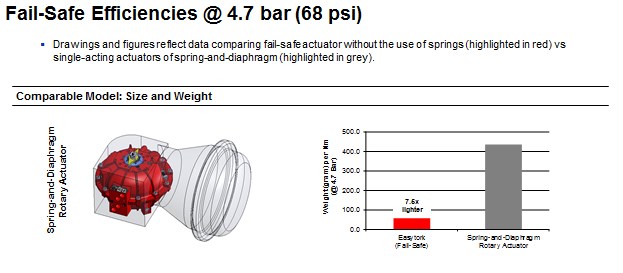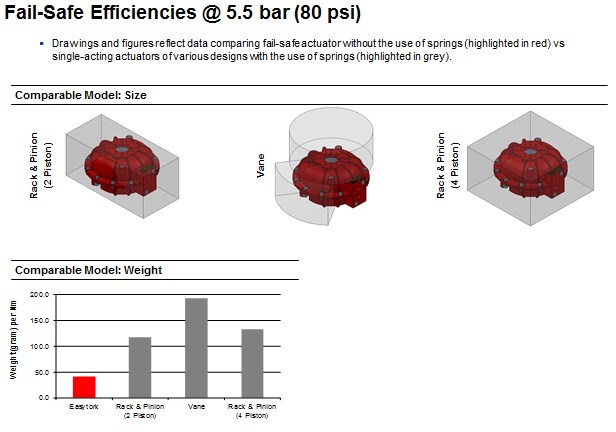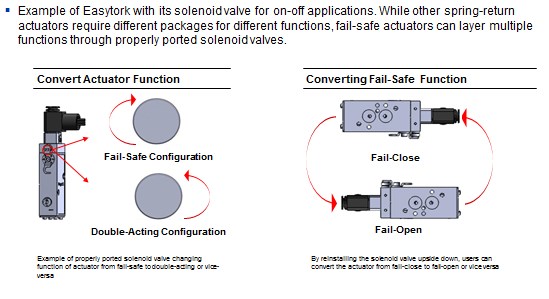Hysteresis is predominantly a function of backlash, defined as a loose mechanical part, or the meshing of gears that impart slop between pinions and gears. When reversing direction, the valve movement will be different from the signal (Figure 1). Backlash is unavoidable in all linear-to-rotary actuary designs such as rack and pinion, scotch yoke, and diaphragm rotary actuators, as these designs require a mechanical pinion to convert linear generated force to rotary force. Regardless of the quality, the pinion is a wearable part that results in increased backlash over time. Unlike linear-to-rotary, vane actuators are pure rotary-to-rotary, meaning all motion produced by the vane actuator transfers unfiltered to the valve stem with zero motion loss.
Until recently, vane actuators were not designed to direct mount to valves and almost always required brackets and couplings for linkage to valve. Note that brackets and couplers are intermediary mechanical components that result in backlash. This historical limitation of vane designs requiring brackets and couplers has limited their use for control valves. Therefore, the ideal actuator for control valves is a vane actuator that can direct mount to valves. The good news is there have already been advancements in this direction. In recently conducted tests, the actuator and its linkage to the valve system added only <0.05% repeatability to the control valve system (Figure 2). Unlike linear-to-rotary actuators, where the pinion experiences wear and lost motion which leads to increased backlash over time, rotary-to-rotary designs do not have to contend with the increased backlash of the pinion.
5/2 fail-safe to optimize process control Additional variables that affect process control optimization include stiction, size limitation, stiffness, response time, safety, and actuator life cycle. Process control optimization can be achieved if 5/2 systems are used instead of 3/2 systems. The former refers to the air flow used in actuators without springs, e.g., double-acting. The latter refers to the air flow used in actuators with springs, e.g., single-acting. In particular the incorporation of springs hampers decision makers with trade-offs among better process control optimization, size, cost, non-linear torque curves, and cycle life. With springs, actuators must be upsized to overcome the spring tension, which leads to increased cost. Additionally, a spring-return vacuums atmospheric air and particles into the actuator housing, damaging the actuator’s spring and soft sealants and resulting in a reduced cycle life on an expensive component.
Thus, the ideal solution on a fail-safe requirement is fail-safe on a 5/2 system. Again, this solution already exists. Air reservoirs can be used in the fail-safe mechanism, as traditionally seen in actuating large shutdown valves, or large process control valves. With the proper pilot assembly, the reservoir is constantly pressurized and available to perform the failsafe operation during a power loss, control signal loss, or catastrophic air failure. Reservoirs have traditionally been external to the actuator. This arrangement not only adds size, weight, and cost to the system, but also requires a considerable amount of external tubing and mounting hardware. These considerations increase the overall footprint, limiting the actuator’s usefulness and cost efficiencies. The ultimate design – and one already design, built, and field tested – integrates the reservoir into the pneumatic actuator housing to provide the necessary stored energy for fail-safe (Figure 3). Without the need for external hardware, these new-generation actuators are the smallest, lightest, and least airconsuming fail-safe actuators on the market (Figures 4 & 5).





